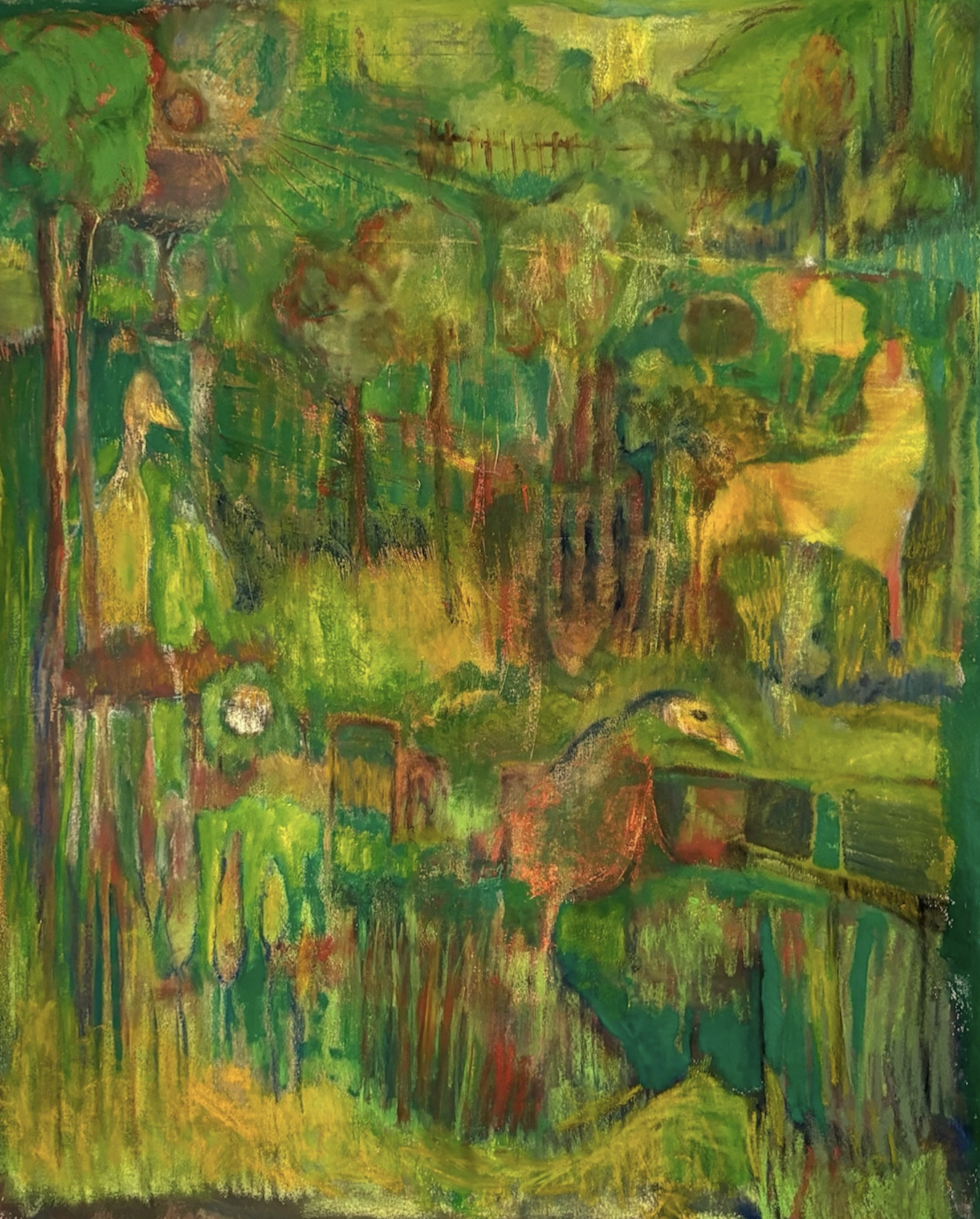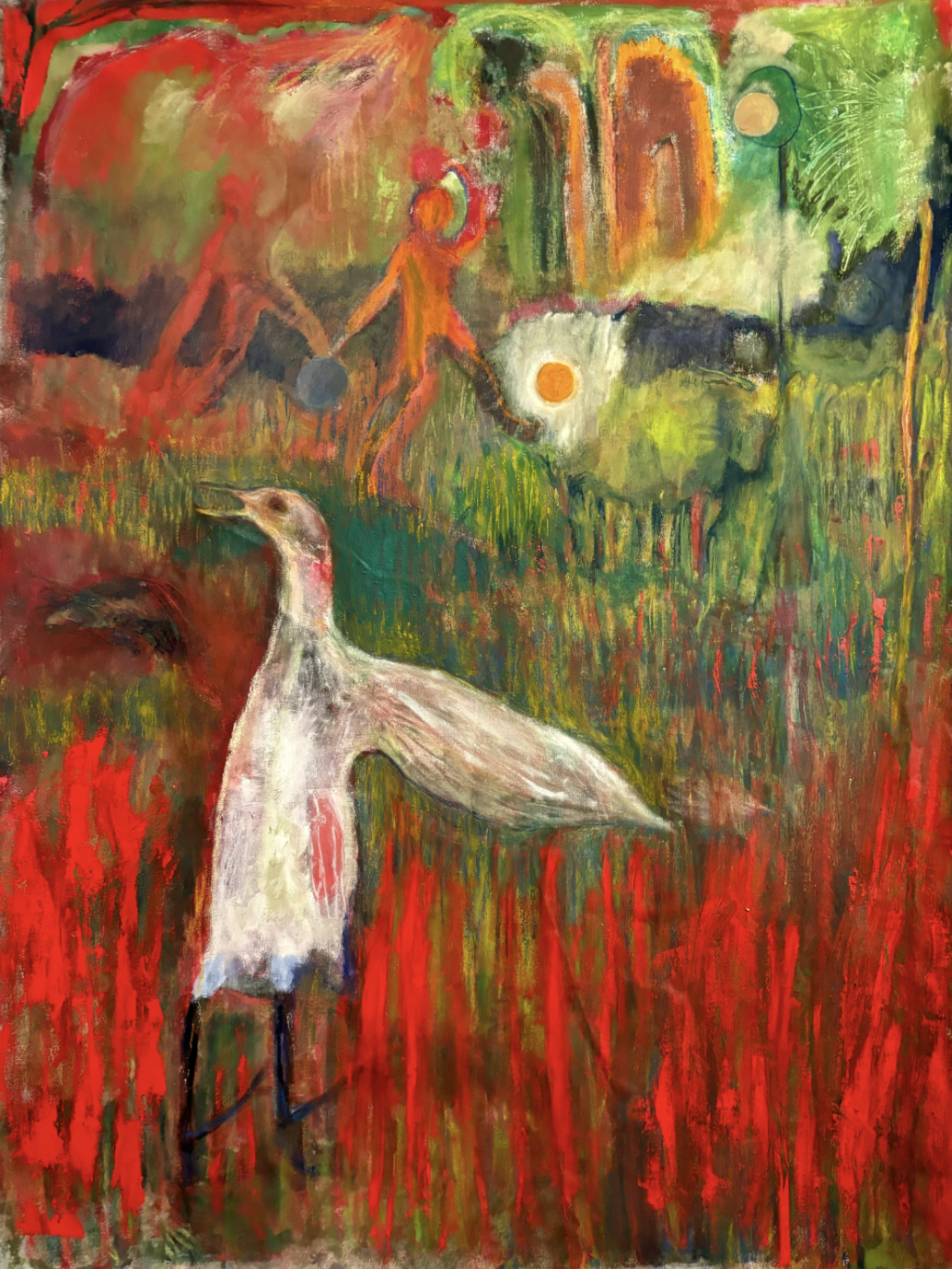Lauren Tsipori: Flightless Bird, Headed East
Muse Gallery
52 North Second St.
Philadelphia
Showing July 30 - Aug. 31, 2025
Seen Aug. 6, 2025
What came first, the chicken or the egg?
It’s an age-old question dating back to Plutarch — and it’s the metaphor for godliness that underlies artist Lauren Tsipori’s latest showcase, “Flightless Bird, Looking East,” currently on display at Muse Art Gallery.
The exhibit features several mural-sized canvases painted with an avian theme and paired with the following artist statement: “Birds are the only creatures of this planet that get to hover between heaven and earth, in the middle ground that separates us from the unknown. They see the world through a perspective where they can remove themselves from the world, observe it, and come back down when they have found what they’re looking for.”


"Birds' Paradise" and "Embryo."
Tsipori uses oil paint and pastel to portray a bucolic, Basquiat world in which winged animals figuratively dominate. Among pieces like “Birds' Paradise,” a bustling green farmland full of abstract fences, beaks and branches, and “Embryo,” a solitary study of a fetal bird with a yolk at its throat, “Flightless Bird, Looking East” stands out as the titular work that steals the show.

At the foreground of the composition is a white goose, its teardrop-shaped wing outstretched and its bill ajar, as if crying into a distance the human observer can’t see. The bird is shrouded in feathered stalks of grass the color of angry coral; behind it are human silhouettes, balancing balls between them like circus seals. The spherical motif is emphasized by a fried-egg cracked into the center of the canvas, like a golden pupil encased in a cloud of sclera.
Whereas the human subjects are fixated on the animalistic game of reproduction, the goose is isolated from its own output; we know from the artist’s caption that the fowl is staring east at an ancient sun, a star whose energy can be harvested but not factorially farmed like livestock. In this field, the goose knows more than its intelligent predators. The bird calls out to the future without trying to control or contest its coming.
The question of “what came first” is a riddle that typically serves to entertain and stump. Tsipori’s work does not care to answer the question, but aims to resurrect a righteous balance between reality and uncertainty. Their abstract style blurs the lines between what birds can be to us — angels of independence or victims of domestication — and thereby allows us to reflect on who we can be as people — cogs in the machine or farmers of our own planet and consciousness.
As rapper Ras Kass lyricizes in his song, “Interview with a Vampire,” which kicks off with the line “What came first, the chicken or the egg”: “The riddle was the answer to the question/ Born of the flesh, what is perfection/ Inside my mother’s womb, doomed to return to the tomb/ Or was it from the dead I was raised?”
“To be or not to be was man’s question since conception/ I think therefore I am, was man’s perception/ But the birth is the resurrection.”
We do not need to think so hard about the chain of creation in order to justify our own existence. According to Tsipori and Kass, we are here because of an act of God, whoever or whatever God might be. Words are sufficient for raising questions, but sometimes the response lies in other languages — like the downy hues of a bird call.





